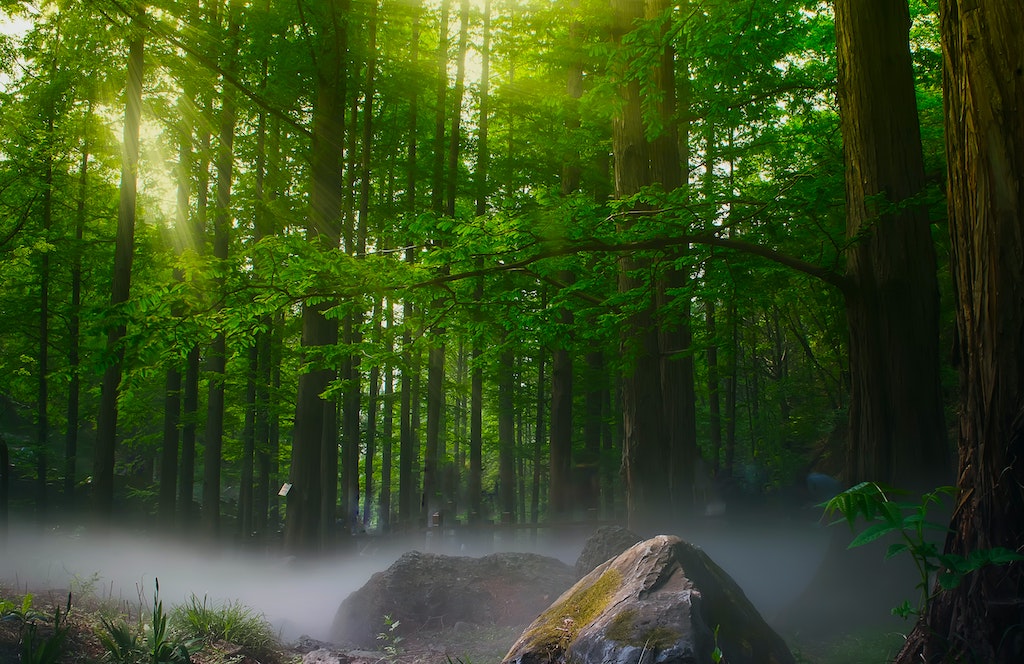
Animism & Land Spirits
Animism (from Latin: anima meaning ‘breath, spirit, life’) is the belief that objects, places, and creatures all possess a distinct spiritual essence. Animism perceives all of nature as alive. Animism is present in the belief system of many Indigenous people and focuses on the metaphysical universe. Each culture has its own mythologies and rituals, animism is said to describe the most common, foundational thread of indigenous peoples’ “spiritual” or “supernatural” perspectives.
The belief that this world is vitally alive, that everything has spirit, and a sort of flow through it emerges from many cultures. This form of animism in which all things have a soul or spirit, including not only living entities like trees and flowers, but also natural formations such as rocks, mountains, and streams was practiced by many ancient societies, including the Celts. In this practice of animism societies did not see a division between the sacred and the mundane. It was often emphasized to practice ritualized behaviors to form and strengthen this bond between the material world and the spirit worlds, which benefited both the individual and the community as a whole.
In cultures that embrace their folk practices, everyday magic, animistic practices become an aspect of their reality. It is quite common for people to be animists and to work with a variety of spirits. The depth of what can be achieved, and the basic power for working with larger forces in providing clarity to spiritual situations through developed sight, as well as trance states, spirit journey to other Worlds, can be unlimited.
Modern Pagan and traditional craft practitioners often work with spirits – this can be focused on ancestral spirits, or spirit guides. Another type of spirit that many in these communities work with are those associated with the land itself, or even a specific place.
The concept of a spirit of place is not something that’s unique. Many cultures throughout time have honored and worked with such beings. The ancient Romans were no strangers to the metaphysical world, and believed in ghosts, hauntings, and spirits. They also accepted the existence of genius loci, which were protective spirits associated with specific locations. The word genius was used to describe spirits that were external to the human body, and loci indicates that they were associated with a place, rather than transient objects. In Norse mythology the Landvættir are spirits, or wights, directly associated with the land itself. These spirits, which act as guardians, may have been the souls of people who once inhabited the space, or were directly connected to the land.Today, Landvættir are still recognized in parts of Iceland and other countries.
In many places, there is an emphasis placed on spirits of place that was assimilated into a type of partnership. Often, locations such as wells, springs, forests, lakes and mountains are associated with land spirits.
Honoring the spirits of the land as part of a regular practice can greatly benefit a practitioner. Take some time to get to know the land spirits around you – commune with them in order to discern what they actually want from you. A little acknowledgment goes a long way. This can be given in the form of offerings, prayers, song, or even just saying thank you.
Finally, be sure not to make assumptions. Just because you inhabit a particular place doesn’t make it spiritually yours. Make the effort to form a connection and bond with the land, and whatever else may be populating it. If you do this, you may find that the spirits that are there already will reach out to develop a relationship with you on their own.
In the Unnamed Path, we work with many spirits in the three Worlds. As part of the training, you will learn and understand how to connect and commune with the land spirits around you. By working with these land spirits over time, you get to know them. And when you work within one place for a while, the land spirits get to know you. Over time, as your actions line up with your words a relationship can be formed.
